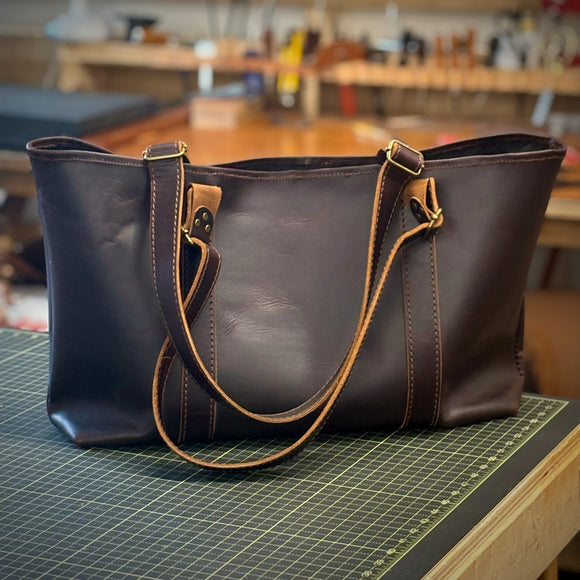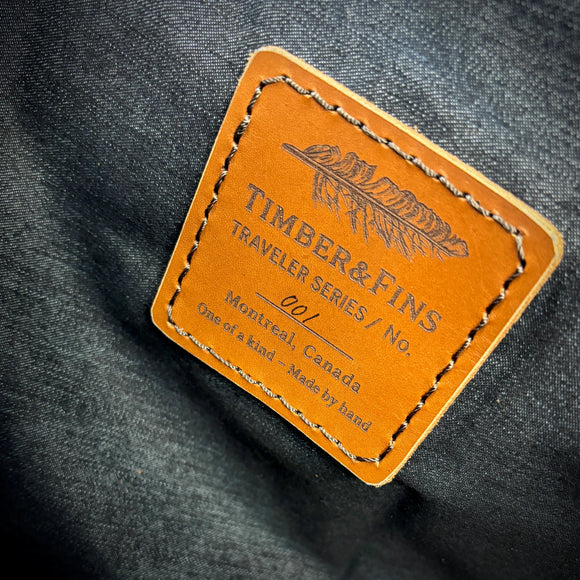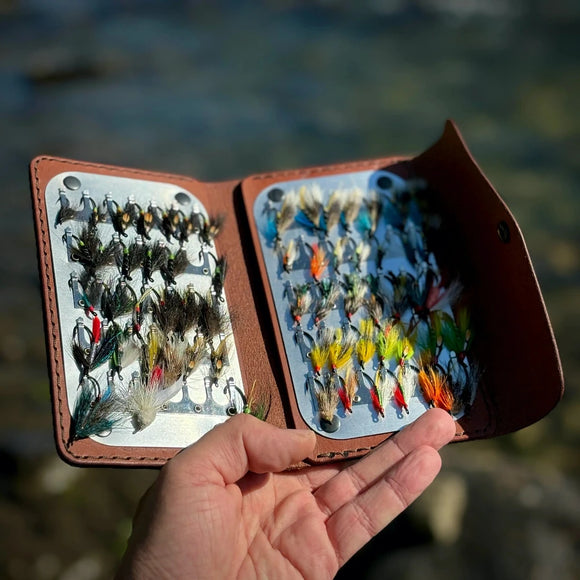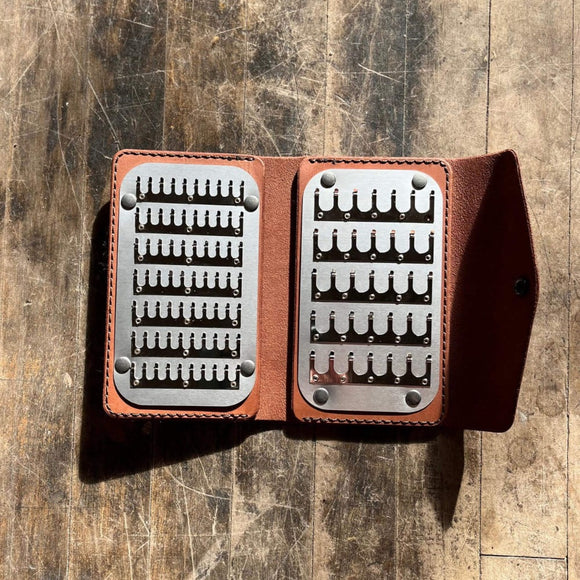Bien qu'il semble presque impossible de mettre en mots la beauté de Margaree, cet article de blog tentera de le faire en espérant seulement que nous lui rendions justice, ne serait-ce qu'un peu…
Margaree et ses environs contiennent certains des paysages les plus beaux que l'on puisse rencontrer à travers le monde. Avec une végétation qui brille d'un vert si éclatant en été que l'on pourrait croire que les photos sont retouchées, et des couleurs d'automne vibrantes qui attirent les touristes sur la route Cabot du monde entier, vous vous retrouverez sans aucun doute à contempler votre environnement avec émerveillement. Mélangez dans une communauté qui semble avoir résisté à l'agitation et au brouhaha de la société moderne, et vous ne pouvez pas vous empêcher de ressentir un sentiment de paix en parcourant les routes sinueuses de la vallée.

Pendant votre séjour sur et autour de la rivière Margaree, vous ne pouvez pas vous empêcher de vous sentir immergé dans la communauté des pêcheurs. Entre de nombreux véhicules équipés de supports de cannes à mouche sur le capot et des clients vêtus de waders faisant leurs courses à l'épicerie locale ou au café, vous réalisez à quel point la pêche au saumon atlantique est profondément ancrée dans la communauté. Comme c'est le cas pour de nombreuses pêcheries de saumon atlantique, beaucoup pourraient dire que la rivière « n'est plus ce qu'elle était ». Cependant, la Margaree abrite toujours l'une des plus célèbres migrations de saumons d'été et d'automne en Amérique du Nord. Avec des licences de pêche coûtant moins d'un quart du prix de nombreuses autres pêcheries, la Margaree offre également l'un des meilleurs rapports qualité-prix que l'on puisse trouver. Que vous aimiez lancer des mouches sèches vers des poissons en attente ou que vous viviez pour balancer des mouches noyées, cette pêche attire tout le monde.

Maintenant, en considérant toutes ces qualités fantastiques que la rivière Margaree a à offrir, je dois mentionner que BEAUCOUP d'autres pêcheurs à la ligne ressentent la même chose. Cela conduit à des poissons qui subissent beaucoup plus de « pression » que dans les petites rivières à travers la province. Si vous êtes quelqu'un qui cherche une escapade de pêche à la mouche où vos bras sont endoloris à force de pêcher autant de poissons par jour, ce n'est pas le voyage pour vous. Si vous êtes quelqu'un qui pense qu'un poisson d'une vie vaut des milliers de lancers, alors vous avez de la chance.
Suggestions/Conseils :
1. Engager un guide. Bien que la Nouvelle-Écosse n'exige pas que les non-résidents engagent un guide, c'est une décision très judicieuse pour les deux raisons clés suivantes :
(I) Selon les conditions, certaines parties de la rivière sont plus susceptibles de contenir des poissons que d'autres. En engageant quelqu'un avec une vaste expérience, ils pourront augmenter vos chances d'attraper un saumon.
(II) Bien que certaines vasques soient clairement indiquées et facilement accessibles, il en existe beaucoup (notamment dans les parties supérieures de la rivière) qui sont plus isolées et nécessitent une certaine connaissance des points d'accès. De plus, lorsque le niveau de l'eau est élevé, de nombreux endroits nécessitent de traverser la rivière, ce qui peut être dangereux pour ceux qui ne connaissent pas bien la rivière et sa configuration.
2. Préparez-vous aux extrêmes météorologiques. Il n'est pas rare d'observer des variations météorologiques et de températures spectaculaires, où les pêcheurs peuvent passer de plusieurs couches de vêtements à des t-shirts et de la crème solaire le lendemain. Cela est particulièrement important si vous envisagez de camper, car les soirées dans la vallée de Margaree peuvent devenir assez fraîches, même en juin et juillet.
3. Familiarisez-vous avec l'étiquette locale de la rotation des postes. Bien que ce ne soit pas courant dans certaines autres provinces, la rotation des postes est très strictement appliquée sur les rivières à saumon atlantique comme la Margaree.
- Pêchez dans l'ordre dans lequel vous arrivez à la piscine (sauf indication contraire)- Travaillez du haut vers le bas de la piscine
- 1 lancers suivis d'une étape en aval.
- Si quelqu'un « élève » un poisson, il obtient généralement du temps supplémentaire pour pêcher au même poste (ou changer de mouches).
- Si quelqu'un attrape un poisson, enroulez votre ligne et quittez la piscine jusqu'à ce que le poisson soit ramené à la main.
4. Préparez-vous à beaucoup de rive droite. Il se trouve que la majorité des fosses sur la Margaree semblent se pêcher depuis la rive droite. Donc, surtout si vous lancez en spey, soyez à l'aise pour lancer des deux côtés de la rivière.

Choix de mouches
Été (juin-août/septembre) : pendant une grande partie de la saison estivale, vous verrez une répartition égale entre la pêche à la mouche sèche et mouche noyée. Assurez-vous d'avoir des mouches sèches telles que bombers et bugs (taille 2-10) et des classiques de la mouche noyée comme black bear green butt, blue charm, cosseboom et green machine (taille 4-12).
Automne (sept-oct) : généralement, pendant la période d'automne, les mouches deviennent plus grosses et souvent plus colorées. Les mouches Marabou (popsicle, noir et bleu, slime) et les mouches crevettes (cascade, Ally’s Shrimp, General Practitioner) sont très courantes en automne, avec des modèles classiques qui restent également efficaces.
Canne/Moulinets
Une seule main : les cannes allant de 7wt à 9wt sont recommandées. Bien que des saumons aient certainement été capturés avec un équipement plus léger, cela ne vaut tout simplement pas la peine en raison de la tension supplémentaire exercée sur ces poissons qui affrontent déjà de nombreux autres défis dans leur environnement.
À deux mains : Les cannes à deux mains traditionnelles (« spey ») ont toujours été présentes sur les rivières à saumon, mais semblent gagner en popularité ces dernières années. Les cannes allant de 10’6” à 13’ sont des choix très courants adaptés à la rivière, cependant, vous pouvez encore voir des pêcheurs utilisant les cannes spey traditionnelles de 14-15’. Selon les conditions de l’eau, il est rare d’avoir besoin de lancer à plus de 60 pieds lors des basses eaux (avec quelques exceptions). Cependant, si l’eau est haute, pouvoir étendre le lancer à 80-90 pieds est certainement un avantage (même si c’est seulement pour limiter la distance à parcourir à pied dans l’eau).
Bobines : En termes simples, il faut quelque chose de fiable et qui permette d'avoir 150-200 m de backing. Certains soutiennent qu'un grand moyeu est crucial, cependant, les pêcheurs qui ont attrapé des milliers de saumons avec des bobines Hardy classiques diront le contraire. Si votre bobine n'a pas un frein à disque lisse, assurez-vous d'être à l'aise avec la technique du « palming », car ces poissons font des courses à une vitesse fulgurante.
Produits en vedette
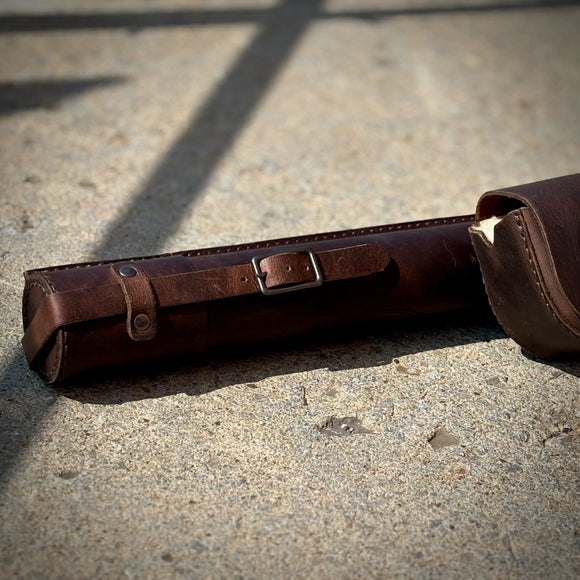
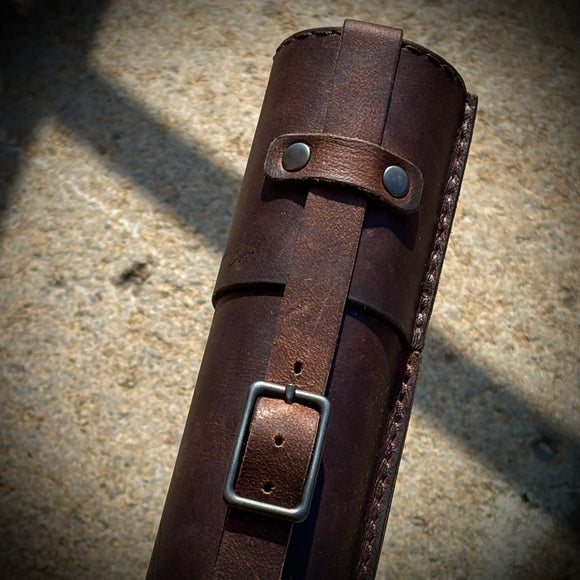
Tube en cuir pour canne


